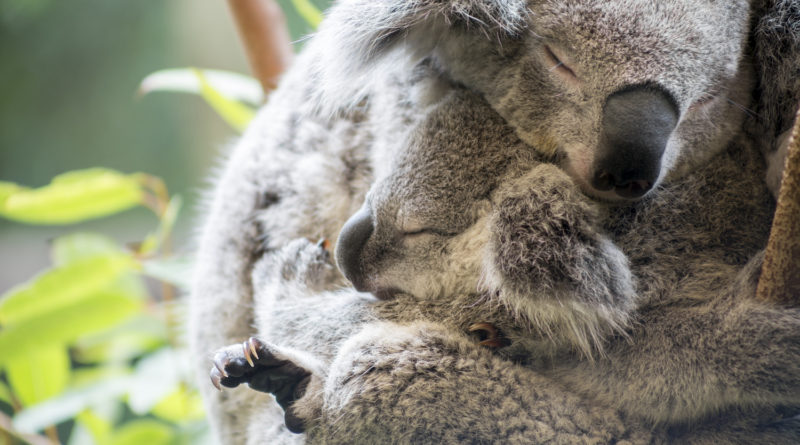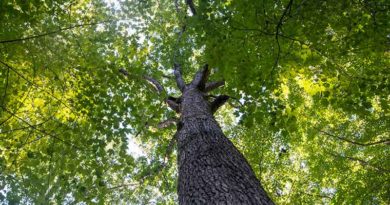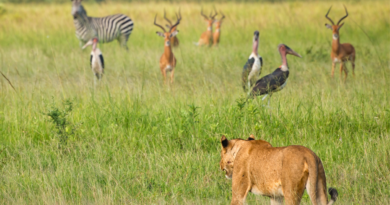Happy Mother’s Day! Spotlight on Marsupial Mothers

This Mother’s Day, celebrate mothers of the animal kingdom! Motherhood for marsupials doesn’t look like making school lunches or warm cuddles, but these species have unique behaviors to take care of their young.
There are over 330 species of marsupials. Around two-thirds of them live in Australia. Most Australian marsupials live in dry scrub or desert habitats and are solitary during the year, except when it is breeding season. Adult female marsupials have a marsupium, or pouch where young marsupials (called joeys) can get their mother’s milk during early development. Joeys go directly from the birth canal to the pouch, attach to a nipple and don’t let go—growing and developing for weeks to months, depending on the species.
Australia has some of the world’s most intriguing native species and diverse habitats. In the wildlife-rich reserves of Tasmania, Kangaroo Island and Cape Otway, admire secluded beaches, coastal rain forests, eucalyptus woodlands, ancient volcanic plains, giant tree ferns and freshwater streams that are home to some of the most unique endemic wildlife in the world.
Here is a spotlight on seven Australian marsupial mothers:

1. Kangaroo
Mother kangaroos gestate their 1-inch embryos for just a short month—afterward, the small baby leaves the birth canal to finish development in its mother’s pouch. While in the pouch, they survive off of their mothers’ milk for six months while they grow into a full joey.
After six months, the joey becomes more and more independent and is large enough to look out of the pouch and start to exit the pouch to graze on its own. The mother’s pouch remains a home for the joey where it will sleep, feed and hide from danger. The joey will then emerge fully from its mother’s pouch after another month or two, fully mature and ready to strike out on its own.
The kangaroo, the world’s largest marsupial, is celebrated as Australia’s national animal emblem. On Nat Hab’s southern Australia nature tour, travelers will find plenty of kangaroo on Kangaroo Island and will seek out forester kangaroos, a subspecies of the Eastern gray kangaroo, in Maria Island National Park, Tasmania.

2. Wallaby
On Nat Hab’s Australia South adventure, you’ll encounter Tammar wallabies on Kangaroo Island, and Bennett’s wallabies in Maria Island National Park, located off Tasmania’s east coast. Bennett’s wallaby is also known as the red-necked wallaby because of the red-tinted fur on the back of its neck and shoulders.
Newborn wallabies are hairless and underdeveloped but have strong enough forelimbs to climb into their mothers’ pouch, where they remain for nine months. Females reach full maturity at 14 months and males at around 19 months.

3. Pademelon
At Cradle Mountain-Lake St. Clair National Park, part of the Tasmanian World Heritage Wilderness Area, you can find the Tasmanian pademelon, also known as the red-legged pademelon. They are very similar to wallabies and kangaroos but are much smaller. These solitary herbivores feed on grasses, herbs and nectar-bearing flowers. Mothers care for their young even after emerging from the pouch, the mother protecting and teaching the infant what and where to forage. Even after a pademelon leaves the pouch, it will often suckle milk from one of the mother’s four teats to supplement its diet.

4. Koala
The gestation period of a female koala is 35 days, after which she gives birth to a single joey. The newborn is quite small and looks like a pink jellybean; totally hairless, blind, with no ears. The young joey stays in the pouch, attaching to one of two teats for the next six months before emerging for the first time. The mother contracts her strong sphincter muscle at the pouch opening to prevent the baby from falling out. The young koala only drinks its mother’s milk for the first six to seven months and remains in the pouch for that time, slowly growing and developing eyes, ears and fur. The joey will then spend between six and 12 months riding on its mother’s back.
Koalas feed on eucalyptus leaves, which are toxic to most animals. As the joey develops, the mothers will start to feed its young pap, or specialized maternal feces, which introduces important microbes to the baby that allows it to make the transition from milk to eucalyptus leaves.
Across Kangaroo Island, Australia’s third-largest island famous for its pristine beaches, local wines and abundant wildlife, you’ll find koalas in abundance nestled in eucalyptus woodlands.
5. Tasmanian Devil
Named after its native habitat, the Australian island state of Tasmania, the Tasmanian devil is the top carnivore on the island. The mother devil gives birth to her tiny, undeveloped babies, called imps, which are pink and hairless and remain in her pouch for close to four months. Around 50 are born in one litter! These hard-to-find nocturnal species are endangered in the wild.
The Trowunna Wildlife Sanctuary is home to the world’s largest heritage population of endangered Tasmanian devils. Forty-two percent of Tasmania is protected as national parks and World Heritage Sites—a legacy of wilderness appreciation is intrinsic to Tasmania, the birthplace of the world’s first environmental political party
The Trowunna Wildlife Sanctuary is involved with the breeding, release and re-introduction of Tasmanian devils, in addition to field monitoring of wild populations and orphan rehabilitation. On Nat Hab’s Australia South adventure, you’ll have a private tour of the sanctuary with one of the head conservationists in charge of education and rehabilitation.

6. Wombat
Wombats are the Tasmanian cousin to the koala and thrive within Cradle Mountain-Lake St. Clair National Park. These solitary, sleep-loving herbivores are powerful diggers and excavate large burrows that can be as much as 65 feet in length. They spend up to 16 hours a day sleeping in these dens, emerging at dusk to feed. Like all marsupial females, the wombat has a pouch—but it opens toward the mother’s rear rather than toward her head. This keeps dirt from filling up the pouch when the mother wombat is busy digging! The joey will remain in the pouch for six to eight months and will fully mature at 2 years old.
7. Tiger Quoll
The lesser-known spotted-tail quoll, commonly known as the tiger quoll, are carnivorous marsupials about the size of small domestic cats. These animals are nocturnal: they hunt by night, spending most of their daytime hours resting in underground hollows, which serve them as dens.
A newborn baby tiger quoll is the size of a grain of rice. The gestation period in this species lasts for 21 days, yielding five young on average. The babies are then moved to the pouch of their mother, where they continue to grow for the following 12 weeks. Then the mother begins feeding her offspring by bringing food into her pouch. The female does not carry her young on her back. However, the babies tend to rest on their mother and cling to her if threatened. Full independence is reached at 18 to 21 weeks old.
On a Nat Hab safari Down Under, you might catch a glimpse of a spotted-tail quoll in Cape Otway or see wildlife rehabilitation in real-time at a conservation sanctuary near Cradle Mountain.




